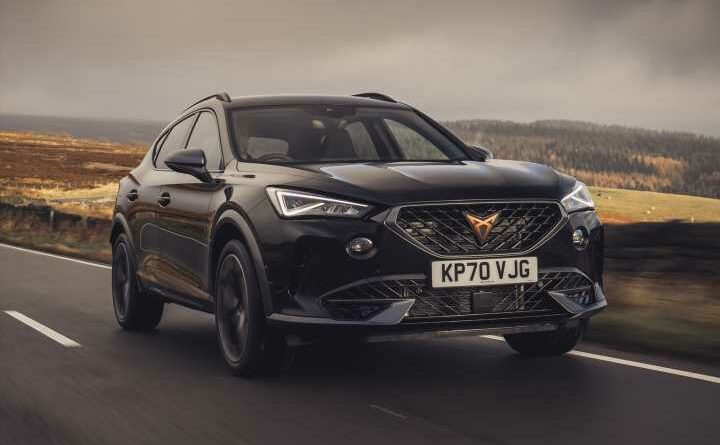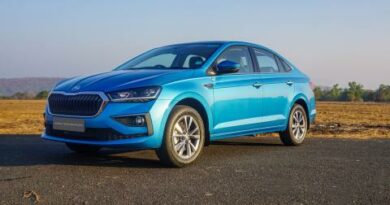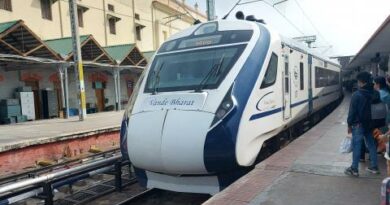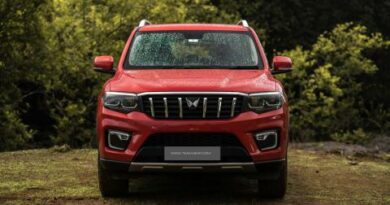Cupra Formentor | PH Used Buying Guide
The does-it-all Formentor proved hugely popular when new – how does it measure up secondhand?
By Tony Middlehurst / Sunday, 5 November 2023 / Loading comments
Key considerations
- Available for £28,500
- 2.0-litre inline four 306hp petrol turbo, all-wheel drive
- Fast, good handling, spacious, well built, and a dose of ‘premium’
- Shows that compromise isn’t always bad
- Touchscreen is a bit annoying
- You might get tired of explaining what it is
What do the phrases ‘all rounder’, ‘versatile’ and ‘do-it-all’ mean to you? If they conjure up an unpleasant whiff of compromise, well, we understand that. Anything that’s been designed to perform well across a wide range of areas can easily end up being bang average in every one of those areas. Aiming high across the board is an especially risky strategy in the automotive world where a misstep can take you one pace closer to financial ruin.
Every now and then however something comes along that really nails that all-rounder ambition. Built on the Volkswagen Group’s MQB Evo platform and powered by a well-proven range of powertrains, the CUPRA Formentor had a less than auspicious start in life when Covid closed the 2020 Geneva show. That was meant to be the Formentor’s springboard and the next stage along CUPRA’s journey along the road to establishing it as a premium brand.
Fortunately, Covid didn’t prevent Formentor sales from starting up in the final quarter of 2020. The first model to be developed exclusively for the CUPRA brand, it was nominally presented as a coupe crossover, but as the Formentor road tests started coming through it became clear that this was more than just another anonymous SUV, even though in a literal sense it was actually anonymous: there were no Formentor badges or labels anywhere on the car.
It didn’t need badges to cover a lot of bases though. You could look at it as an SUV, a hot hatch, a sporty estate, a tax- and fuel-saving PHEV, or even a coupe. In the higher-performance 2.0 models in particular – 187hp (all-wheel drive), 242hp as used in the Golf GTI (front-wheel drive), and 306hp, as used in the Golf R (all-wheel drive again) – it stood up to be counted in all of those guises. Interior space and practicality were well up to SUV expectations, but the Formentor’s lower stance and extra physical length over the SEAT Ateca gave it a much more purposeful look than its school-run relative. As a nice bonus, it offered a level of quality that you wouldn’t necessarily find in all, or even most, of the VW group’s other products.
The name was taken not, as it might sound, from a beer bottle, but from a rather lovely part of Majorca. You’d only have to go to the bother of explaining that to your neighbour if they had any idea that it was a Formentor in the first place. Chances are they wouldn’t, because of the aforementioned lack of badges. Then again, many of them wouldn’t know what a CUPRA was either. Their confusion wouldn’t necessarily have been reduced by the Formentor naming convention which started with V1 and V2 and went up through more powerful VZ1, VZ2 and VZ3 models, VZ being a shortened form of the Spanish word veloz, meaning speed.
As standard, range-bottoming V1s had 18-inch wheels, interior ambient lighting, PVC/cloth upholstery, LED lights with Dynamic Range Control, 10.25-inch Digital Cockpit, 12-inch Navigation with voice control, DAB radio and Full Link integration (wireless Apple CarPlay and wired Android Auto), four USB-C socket, wireless phone charger, CUPRA Connect with a 10-year safety and service connection and a 1-year online infotainment, speed alerts and traffic info subscription, copper and aluminium interior detailing, leather steering wheel, three-zone climate control, rear parking sensors, predictive/adaptive cruise, lane assist, forward collision warning with auto braking, a Safety & Driving pack incorporating dynamic road sign display and high beam assist, and a bunch of other stuff. A good level of equipment you might say.
The V2 had all that V1 stuff plus/or 19-inch machined black/silver ‘Exclusive’ alloy wheels, an electric tailgate with foot-wave opening, black leather heated memory seats with copper stitching and embroidered CUPRA headrest logos, leather dash, leather heated steering wheel, park assist (with front and rear sensors), and a rearview camera.
Moving to the more powerful VZ models, the VZ1 had a rear diffuser, single exhaust tailpipes on each side, Dynamic Chassis Control, sports suspension, front and rear parking sensors, rearview camera and an augmented Safety & Driving pack with blind spot monitoring and exit assist to warn you of traffic when opening doors. It still had the plastic/cloth seats though. These were upgraded to the CUPRA-logoed electric leather seats in the VZ2 along with a leather dash and door panels and a heated leather steering wheel with start-stop, CUPRA mode button and gearshift paddles. The S&D pack on the VZ2 was expanded by lane change assist and emergency assist, which automatically brought the car to a safe stop if the occasion required it.
The VZ3 had all the VZ2 stuff plus Brembo brakes and a choice of copper/black Exclusive wheels. The range-topping Edition had ‘Sport’ black/copper wheels and a panoramic sunroof. The seats in the top-spec cars were in petrol blue or black leather, both with copper-coloured stitching, which looked better than it sounded.
All Formentors had independent suspension and speed-sensitive power steering. VZs had lowered sports suspension and adaptive damping. VZ2s and VZ3s could be had with the 306hp 2.0 TSI petrol engine used in the Golf R and Audi S3. Matched with a DSG automatic gearbox and 4Drive all-wheel drive system with Dynamic Chassis Control these Formentors did 0-62mph runs in the high-four second bracket.
The VZ Edition and the VZN which came out in June 2023 were only available with the 306hp 2.0 TSI motor. The VZN offered ‘limited edition’ trim with matt black 19-inch wheels, various black chrome pieces, CUPRA-logoed Dinamica sports seats (heated fronts), panoramic sunroof, 360-degree ‘top-down’ reversing camera and a copper-stitched leather dash. It came in two colours, black or a model-exclusive Mountain Green. You could mix and match the various features, packs etc for extra cash so you shouldn’t expect to find the exact specs described in any one car. Hope that’s all clear.
You will be able to find used front-drive 148hp 1.5 TSI Formentors today (October 2023) for under £20,000. They will have the Formentor look about them but with that powertrain they were more about sensible econo-motoring than fomenting whatever you might have had coursing around in your loins. The 242hp 1.4-litre plug-in hybrids combining the 148hp petrol engine with a 113hp electric motor and a 13kWh battery pack were quite a bit quicker off the mark than the 1.5s, but this being PistonHeads we’re going to go straight to the most powerful car in the Formentor range.
Annoyingly however we can’t do that, because a decision was made to keep the 2.5-litre, five-cylinder, 390hp/354lb ft, 0-62-in-4.2 seconds, Drift Modey VZ5 off the UK market. You could put your name down for one of the ten VZ5s that were going to be allowed into the UK at the sterling equivalent of 61,000-odd euros, but none of them would be right-hand drive, so today we’ll be looking at the somewhat more numerous and therefore easier to find 306hp 2.0-litre TSI Formentor 310 in VZ2 and VZ3 specs.
Top of the range VZ3 Editions were just under £44k in 2020. VZ3s were VZ2s were just under £40k new at that time. Today (October 2023) you can get a 310 VZ2 for £28,500. A car at that price was available on PH Classifieds at the time of writing. We’ll link you to it at the end of this piece. There’s going to be a facelift on 2024 model-year Formentors, but will your own face be lifted or dropped by the prospect of a 2020-on used example? Let’s dip into it.
SPECIFICATION | SEAT FORMENTOR VZ2/3 (2020-on)
Engine: 1,984cc inline-four turbo 16v
Transmission: 7-speed dual-clutch auto, all-wheel drive
Power (hp): 306@5,450-6,000rpm
Torque (lb ft): 295@2,000-5,450rpm
0-62mph (secs): 4.9
Top speed (mph): 155
Weight (kg): 1,570
MPG (official combined): 33.2
CO2 (g/km): 193
Wheels (in): 19
Tyres: 245/40
On sale: 2020-on
Price new (2020): £39,830 (VZ2)
Price now: from £31,000 (VZ3)
Note for reference: car weight and power data is hard to pin down with absolute certainty. For consistency, we use the same source for all our guides. We hope the data we use is right more often than it’s wrong. Our advice is to treat it as relative rather than definitive.
ENGINE & GEARBOX
The 310 was powered by Volkswagen’s EA888 2.0 TSI engine. Enough has been written about this engine to fill a book. It was chain-timed and in the early days at least it did have a bit of a reputation for sudden and unexpected tensioner failure at random mileage points. A revised part was put out to stop that happening so it shouldn’t be an issue on much more recent cars like the Formentor. You’d like to think the same would apply to the EA888’s sometimes troublesome vacuum-operated intake manifold flaps, its sometimes excessive oil usage, and its sometimes failing turbochargers, an issue that in fairness seems to be limited to cars built before 2015.
What definitely did affect the Formentor, specifically the 2021 and 2022 examples, was poor securing of the radiators. That generated a recall. So did loose engine covers which could contact the turbocharger, risking a fire. Over 30,000 2.0 TDSI-engined Formentors were brought back in for that. Otherwise, the EA888 was a fine unit delivering smooth, linear power and plenty of torque from 2,000rpm or less. The EA888 also had port injection as well as direct injection to combat the carboning-up process that could blight direct-injection-only engines.
In the Formentor 310, the engine was fired up from a wheel-mounted button and sounded like it meant business straight from the off, thanks not only to the quad round tailpipes on the 310 but also to the sound creator whatsit. There wasn’t much noise to be heard outside but what there was inside was mentally energising. The twin-clutch gearbox was predictably fast-changing but it could get into a tizz trying to select the best gear when you were pottering about, often seeming to be in too low a gear unless you were in Sport mode, when it seemed happier.
Fuel consumption for the 310s tended to be in the high 20s but figures in the low 30s were quite easily achievable and acceptable enough given the performance. You wouldn’t get much better numbers in a basic 1.5. A Stage 1 remap on the 310 would reputedly take the power to over 400hp. Typical fixed-price servicing costs for Formentors over 2 years old are £219 for a minor (every 12 months/10,000 miles) and £349 for a major (every 24 months/20,000 miles).
CHASSIS
Some say that the Formentor 310 drove like an enlarged Golf R. It was all-wheel drive with an electronic diff, but the handling veered more towards keeping the package secure. Drifting was part of the ultra-rare VZ5’s skillset, and it was possible in the 310 by pressing the ESP button, but that sort of behaviour never felt ingrained into the overall offering. It was more about traction than thrills.
Enjoyable traction though. 300hp+ in a 1.5-tonne car shouldn’t be boring, and nor was it in the top-drivetrained models. The handling kept up well with the performance. You had four ‘fixed’ driving modes, Comfort, Normal, Sport and Cupra, and Individual which let you set your own mix of responses. The Adaptive (or Dynamic) Chassis Control system that was standard on all VZ Formentors played its part too, tailoring the suspension to upcoming conditions by actively monitoring the road ahead.
The piped-in noise in CUPRA mode could become wearing over time, and tyre noise was pretty much ever-present, but the ride quality was still bearable even if you were in CUPRA mode and on bigger wheels. The VZ models had a choice of five 19-inch wheels in either black and silver or black and copper.
The variable-rate steering was fast, weighty enough and direct, and the 310’s Brembo brakes were excellent and resistant to fade on a trackday, an unlikely event for one of these you might think but you could surprise a lot of people there. Narrow country roads could be more of a trial, not just because of the Formentor’s extra width compared to the Ateca but also because if you didn’t disable the lane keep assist function the CUPRA had a slightly alarming tendency to steer you towards the hedge on the left.
BODYWORK
In its wonderfully flowery PR material CUPRA said that its Formentor had an ‘exquisite forward-facing design’, a concept we can surely all get behind. The Formentor’s body was wider than the Ateca’s but it was also lower and more rounded, which inevitably reduced absolute cargo space, but it was still nicely accommodating for both passengers and cargo. You got more boot space in two-wheel drive cars (450 litres) than in the 4Drive ones (420 litres). The hybrids’ boots were much smaller still at 345 litres but of course, you could greatly increase all those numbers by dropping the back seats.
The Formentor did well on safety, its five-star Euro NCAP rating including a 93 per cent score for adult occupant protection and 88 per cent for child passenger protection. The 310 could tow a braked trailer weighing up to 2 tonnes. Towbar installation was around £800.
Some owners noticed a rattling from what seemed to be somewhere near the bottom of the A-pillar. There was initial suspicion it might be to do with the bolts holding the screen wiper assembly rattling against some underbonnet metal, and that could still be part of it. Most owners complaining about it were told it was normal and then invited to go away but more determined owners kept digging until it was traced, by general agreement, to the metal-on-metal design and positioning of the bonnet hinge.
Front sensors could stop working if they got dirty. This would disable the Front Assist radar that maintained a set distance between you and the car in front. When the FA was working it could be a little sudden in its application of the brakes when you approached a car in front, even if it was set at the maximum distance.
INTERIOR
As mentioned earlier there was decent space in a Formentor but perhaps the most impressive aspects of its interior were its design, quality and (with one exception, which we’ll get to in a minute) human-friendliness. The sports seats were very comfortable over a long period, placing the driver at a handy height that was halfway between a sports hatch and a normal VW crossover. The adaptive cruise made motorway trips less intolerable. The colour-selectable ambient lighting running into the doors from across the bottom of the screen was a really nice feature that added a jaunty je ne sais quoi to the whole Formentor experience.
In addition to the normal VW group digital instrument panel there was a 12-inch MIB (gen three) touchscreen integrating both voice and gesture control. This connected passengers to CUPRA’s Full Link infotainment system, which provided wireless CarPlay, wired Android Auto and needlessly over-fiddly control of the cabin temperature and audio volume/station selection at night, which is when you realised that you couldn’t see the non-backlit physical ‘slider’ controls. Wireless device charging was standard. A BeatsAudio sound system was optional.
Electronic glitches have been a bit of a bugbear with Formentors. Seat heaters have been known to conk out. The touchscreen drove some owners mad. Most were laggy and many suffered from total seizure. CarPlay would absent itself entirely for long periods. Voice control and touch pressures could be inconsistent in their responses. The radio might start at full blast.
In the Formentor’s defence, other cars from Volkswagen could be just as infuriating in this area. Dealer reflashes usually brought improvements, but non-engine electronic problems like this, the non-activation of the pedestrian and cyclist detection assist systems on 2,165 early build cars (which triggered the Formentor’s first recall), and the need to replace a faulty fuse on over 16,000 cars made between 2020 and 2022 did all contribute to the Formentor’s drop down the ‘reliable SUVs’ list. Another recall was issued to put right faulty seat belt anchorage points on 2020 and 2021 models.
PH VERDICT
There was a deal of grumbling from the PH massive when Formentor road impressions first appeared. The complaints ranged from ‘where has car design gone?’ via ‘why is it not electric? to ’who is going to buy that from a non-established brand like CUPRA?’
The answer to that last question turned out to be ‘quite a few’. In the UK at least the Formentor has single-handedly outsold the other three CUPRA products (Ateca, Born, Leon) combined, by a margin of around three to two, suggesting that British motorists have understood and appreciated the all-round allrounder package. Various awards handed to it by various car magazines have helped to cement its credentials. Going fast in something that looks like it shouldn’t go fast is always fun, and that’s what you got with a top engine spec Formentor. If you wanted an authentic Golf R experience, well, you got a Golf R, but if you wanted near-Golf R performance with SUV space and practicality then the Formentor 310 was a pretty cool solution.
Although the Formentor technically came out in 2020 you’ll have a job finding a ’20-registered one for sale in the UK. The most affordable 306hp Formentor we found on sale in the UK at the time of writing (October 2023) was this PH Classifieds-advertised 29,000-mile 2021 VZ2 in black at £28,500.
The lowest-priced VZ3 on PH Classifieds in Oct ’23 was this 15,000-mile 2022 car in white at £35,795, but if the VS2 spec was good enough you might come to the conclusion that there was little point in spending more than £32,000 on a Formentor 310. PH had lots to choose from for under that figure. In fact, you needed less than £31k to get you into a car with a four-figure mileage like this 7,000-mile VZ2.
Source: Read Full Article



